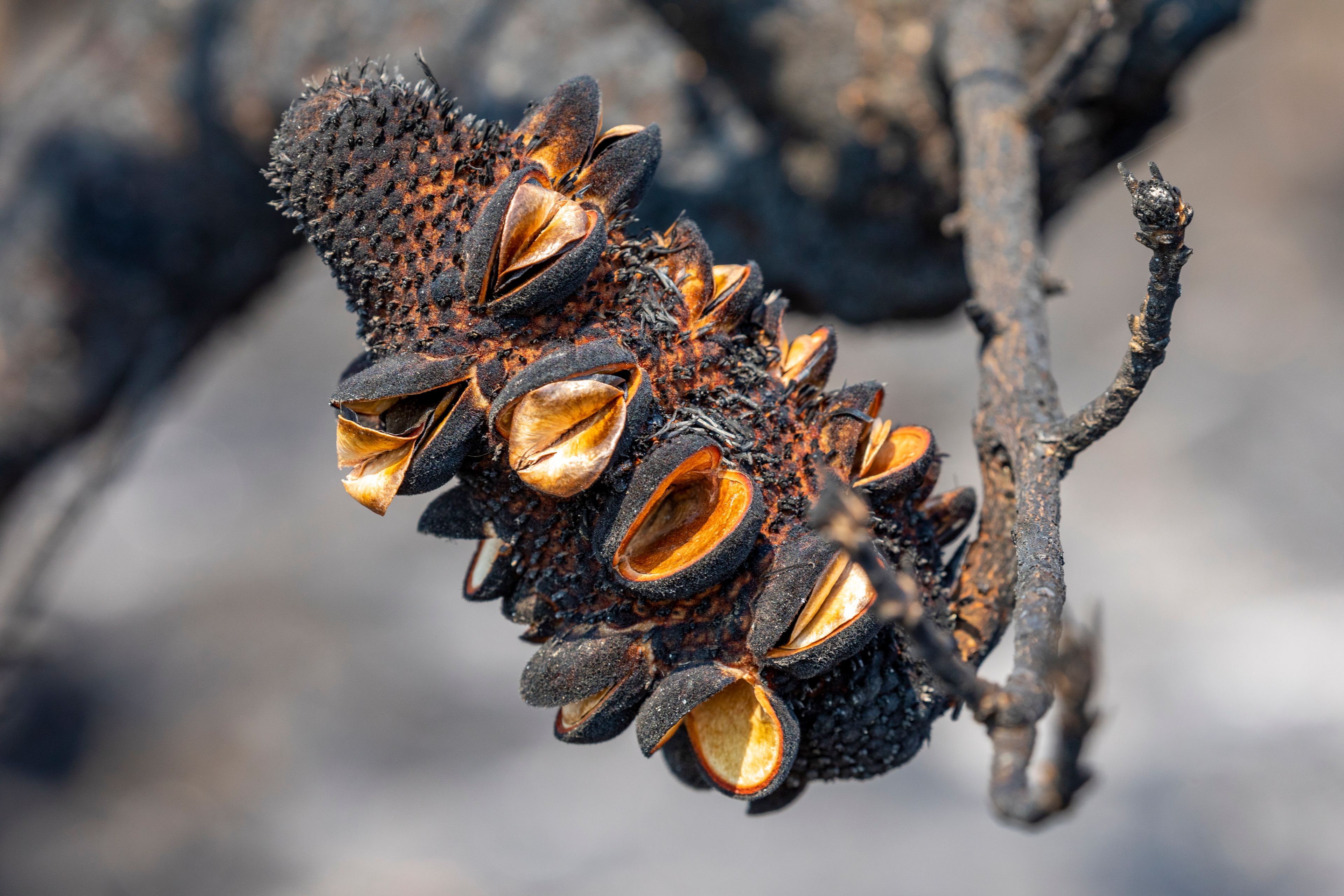Home/Curriculum resources/Mathematics of bushfire/Activity 2 - Fire behaviour (Part one)
Learning Area:
Mathematics
Year level:
Level 9
Suggested timing:
40 minute discussion on concepts and theory. One 40 minute session to work on problem set 1 and one 40 minute session to work on problem set 2 in handout.
Required resources:
Handout

Activity 2 - Fire behaviour (Part one)
This activity is a part of the Mathematics of bushfire resource.
Burnt Banksia Plant. Blue Mountains, Dharug country. Photographer: Andrew Merry. Source: Getty Images. Used under licence.
In this two-part activity, students will delve into the concept of head fire rate of spread and explore the factors affecting it, such as wind, temperature, humidity, and topographic slope. They will apply equations to calculate fire spread rates in different environments using real-time weather data from the Bureau of Meteorology, fostering a practical understanding of fire behavior.
Required resources
Suggested supporting resources
Step by step guide
Students are introduced to the concept of head fire rate of spread, and discuss the factors that influence it (wind, temperature, relative humidity, and topographic slope both uphill and downhill).
Students are introduced to equations that relate rate of spread in grassland and forest to wind speed, temperature, relative humidity and topographic slope.
Students look at the Bureau of Meteorology website and find the nearest automatic weather station. Use the current data to calculate how fast a fire would spread in grassland and forest.
Related activities within this resources:

Activity 1 - The geometry of fire
In this activity, students study ellipses, apply the properties to understand wind-driven fires, and estimate fire areas using scientific notation for a comprehensive grasp of fire behaviour.
Suggested timing:
30-minute discussion on concepts, theory and example problems. Two 30-minute sessions to work on assigned problems in handout.
Required resources:
Handout

Activity 3 - Fire behaviour (Part two)
In this two-part activity, students will explore concepts like flame angle, flame height, and fire intensity, delving into the factors influencing them, such as fuel load.
Suggested timing:
40 minute discussion on concepts, theory and examples. One 40-minute session to work on problem set in handout. 15 minutes class discussion on the two inquiry questions listed below after watching the video.
Required resources:
Handout, Laptop/tablet, Projector

Activity 4 - Fire and climate
In this activity, students delve into fire danger ratings, examine the forest fire danger index, analyse historical fire weather changes, interpret data, and make informed decisions, deepening their comprehension of the fire-climate connection.
Suggested timing:
40 minute discussion on concepts, theory and examples. One 30 minute session to work on problem set 1, and one 40 minute session to work on problem set 2 in handout. Problem set 2 can involve broader class discussion and students working in groups.
Required resources:
Handout, Laptop/tablet and internet connection